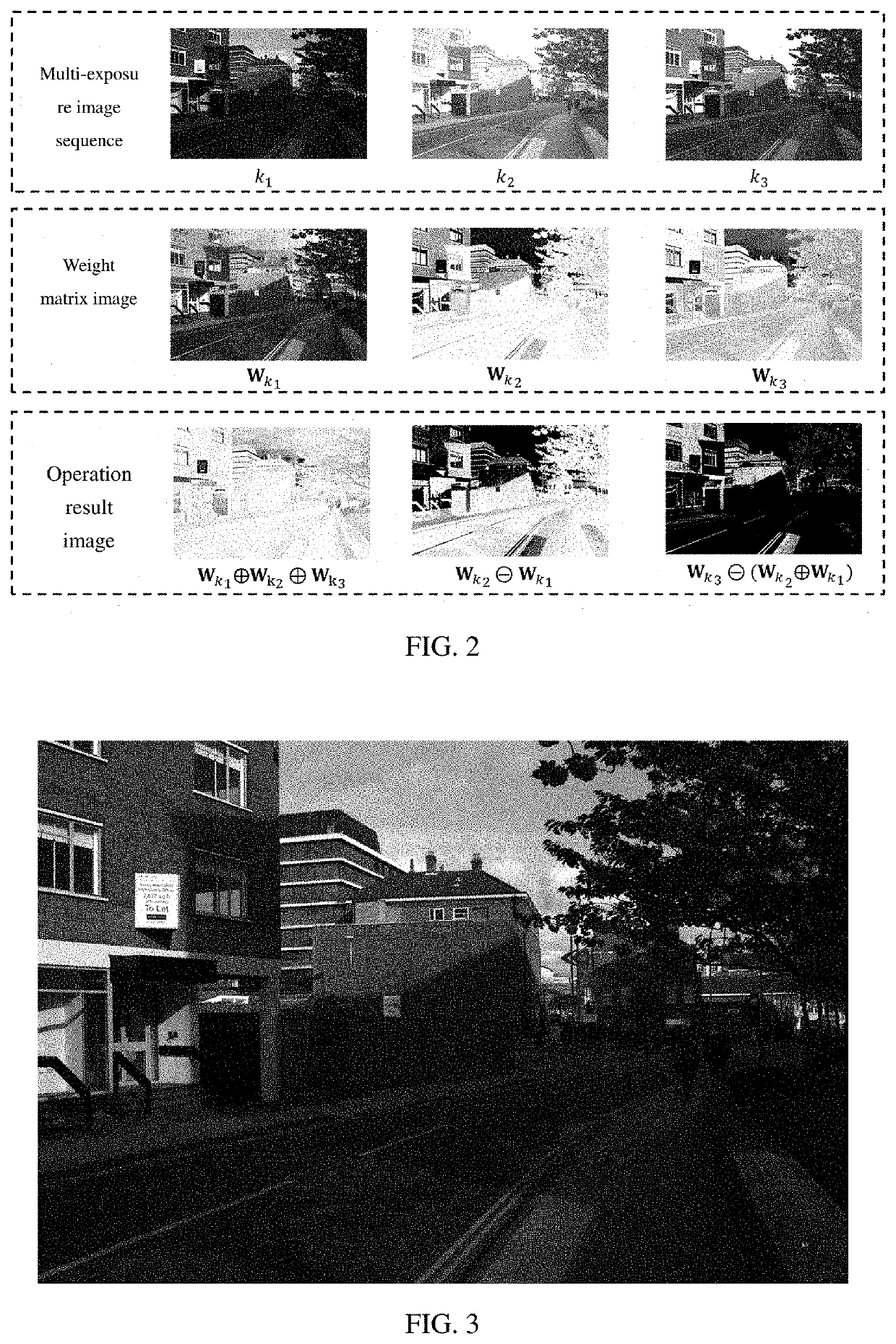Method for enhancing low-illumination image
a low-illumination image and image enhancement technology, applied in image enhancement, instruments, television systems, etc., can solve the problems of poor visibility of low-illumination images, serious affecting the observation of people and the performance of some computer vision algorithms, and most algorithms cannot directly process low-illumination images. , to achieve the effect of accurately describing the relationship, enhancing the low-illumination image, and preserving the naturalness of imag
- Summary
- Abstract
- Description
- Claims
- Application Information
AI Technical Summary
Benefits of technology
Problems solved by technology
Method used
Image
Examples
Embodiment Construction
[0041]The present invention is further described through embodiments in combination with the accompanying drawings, but is not limited in any way.
[0042]The present invention provides an algorithm for enhancing a low-illumination image based on a camera response characteristic, which can preserve image naturalness. The algorithm provided by the present invention firstly selects an exposure model capable of accurately describing a relationship between images with different exposures and obtains a corresponding camera response equation model, then, determines parameters of the model by a camera response curve of cameras corresponding to low-illumination images or two images with different exposures taken by such cameras, subsequently, estimates an exposure ratio of a multi-exposure image sequence to be generated to an original image and generates the multi-exposure image sequence by utilizing the exposure model, and finally, utilizes an image fusion algorithm to fuse the multi-exposure...
PUM
 Login to View More
Login to View More Abstract
Description
Claims
Application Information
 Login to View More
Login to View More - R&D
- Intellectual Property
- Life Sciences
- Materials
- Tech Scout
- Unparalleled Data Quality
- Higher Quality Content
- 60% Fewer Hallucinations
Browse by: Latest US Patents, China's latest patents, Technical Efficacy Thesaurus, Application Domain, Technology Topic, Popular Technical Reports.
© 2025 PatSnap. All rights reserved.Legal|Privacy policy|Modern Slavery Act Transparency Statement|Sitemap|About US| Contact US: help@patsnap.com



